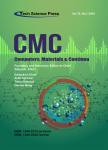Attention-Based and Time Series Models for Short-Term Forecasting of COVID-19 Spread
作者机构:Institute of Applied MathematicsVilnius UniversityVilnius03225Lithuania Institute of Data Science and Digital TechnologiesVilnius UniversityVilnius08412Lithuania
出 版 物:《Computers, Materials & Continua》 (计算机、材料和连续体(英文))
年 卷 期:2022年第70卷第1期
页 面:695-714页
核心收录:
学科分类:1004[医学-公共卫生与预防医学(可授医学、理学学位)] 100401[医学-流行病与卫生统计学] 0812[工学-计算机科学与技术(可授工学、理学学位)] 10[医学]
基 金:This project has received funding from the Research Council of Lithuania(LMTLT) agreement No S-COV-20-4
主 题:COVID-19 spread modeling attention-based forecasting machine learning data registration data analysis ARIMA
摘 要:The growing number of COVID-19 cases puts pressure on healthcare services and public institutions *** pandemic has brought much uncertainty to the global economy and the situation in *** methods and modeling techniques are important tools for governments to manage critical situations caused by pandemics,which have negative impact on public *** main purpose of this study is to obtain short-term forecasts of disease epidemiology that could be useful for policymakers and public institutions to make necessary short-term *** evaluate the effectiveness of the proposed attention-based method combining certain data mining algorithms and the classical ARIMA model for short-term forecasts,data on the spread of the COVID-19 virus in Lithuania is used,the forecasts of epidemic dynamics were examined,and the results were presented in the ***,the approach presented might be applied to any country and other pandemic *** COVID-19 outbreak started at different times in different countries,hence some countries have a longer history of the disease with more historical data than *** paper proposes a novel approach to data registration and machine learning-based analysis using data from attention-based countries for forecast validation to predict trends of the spread of COVID-19 and assess risks.



